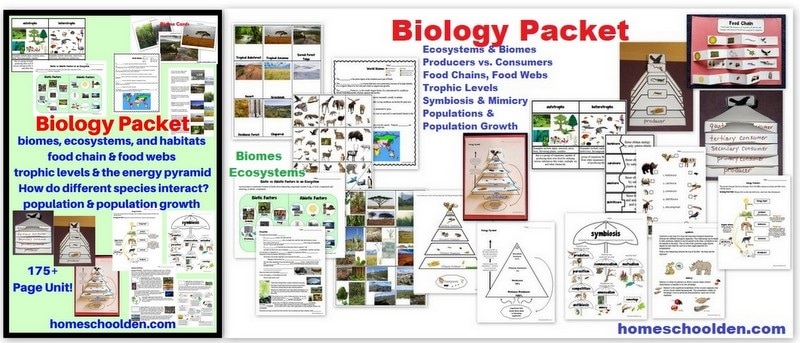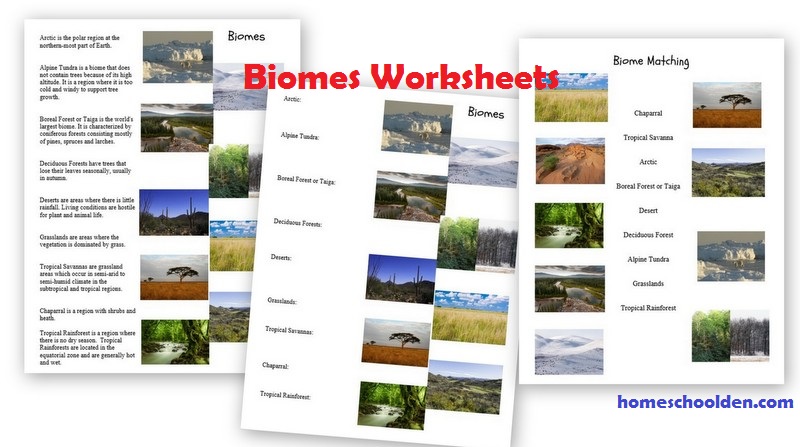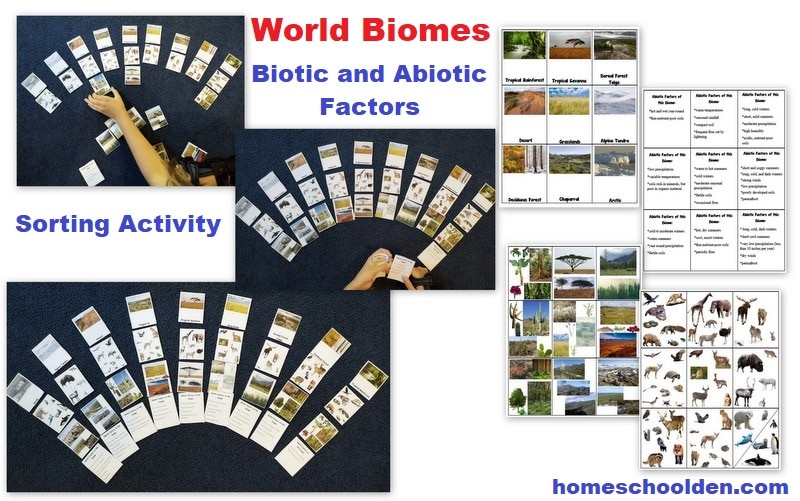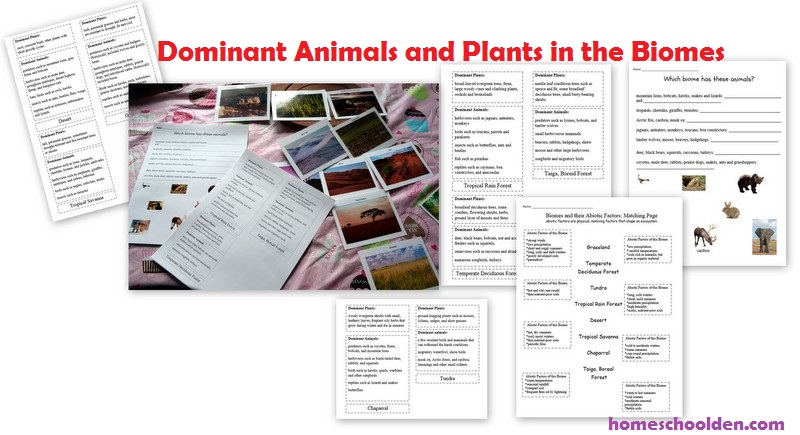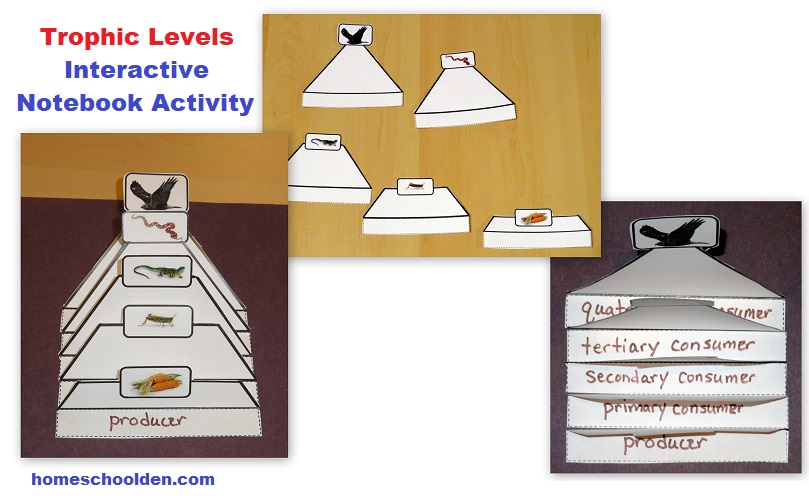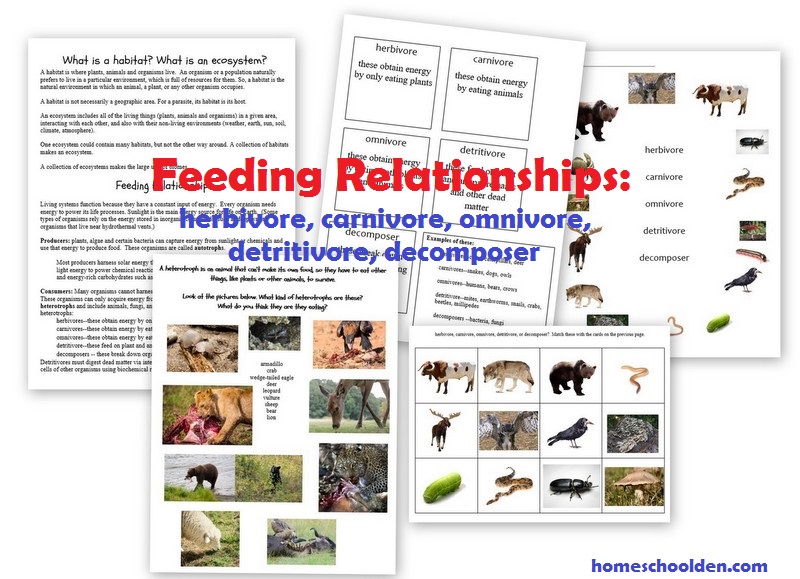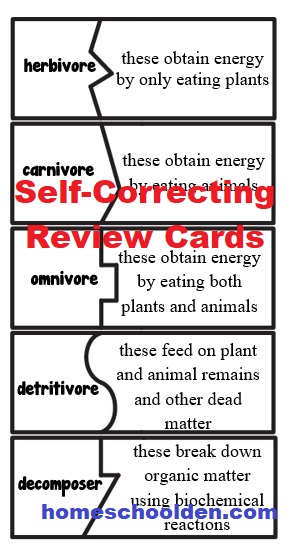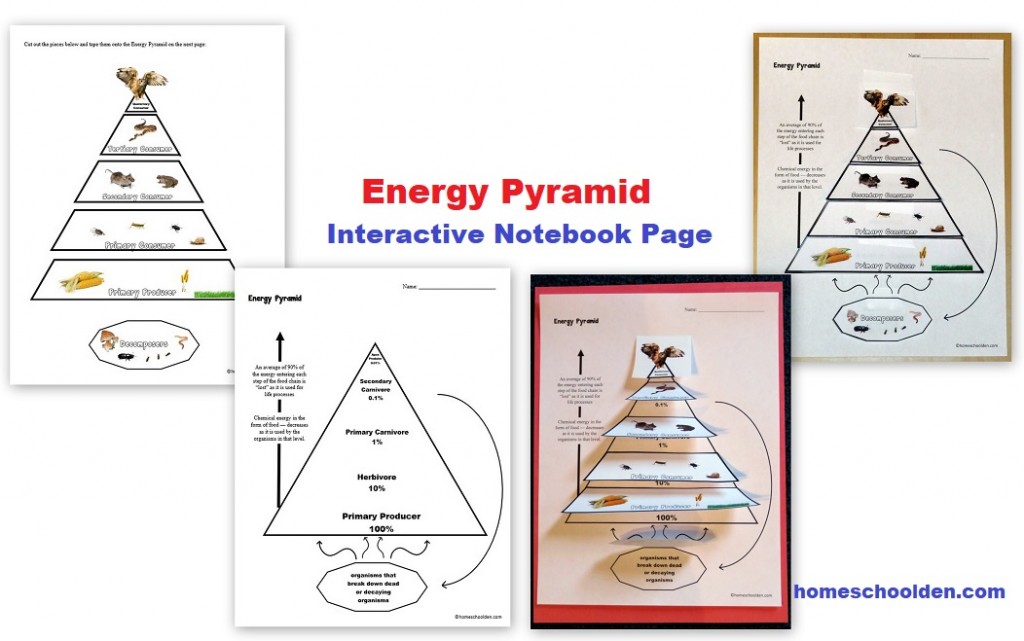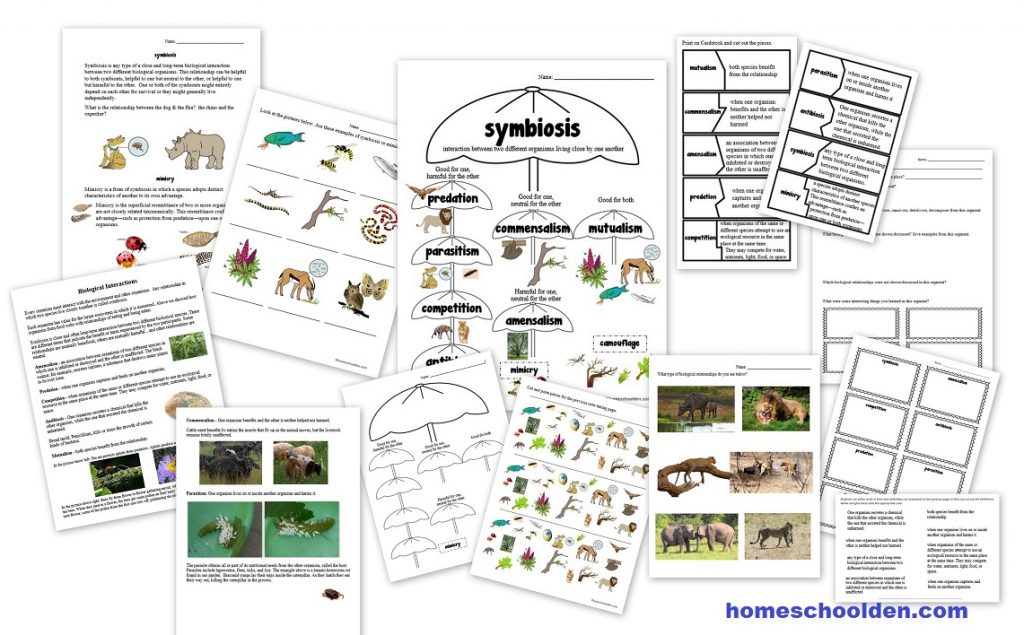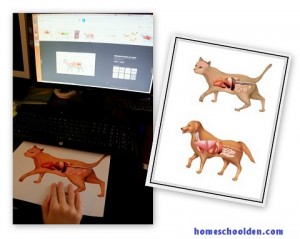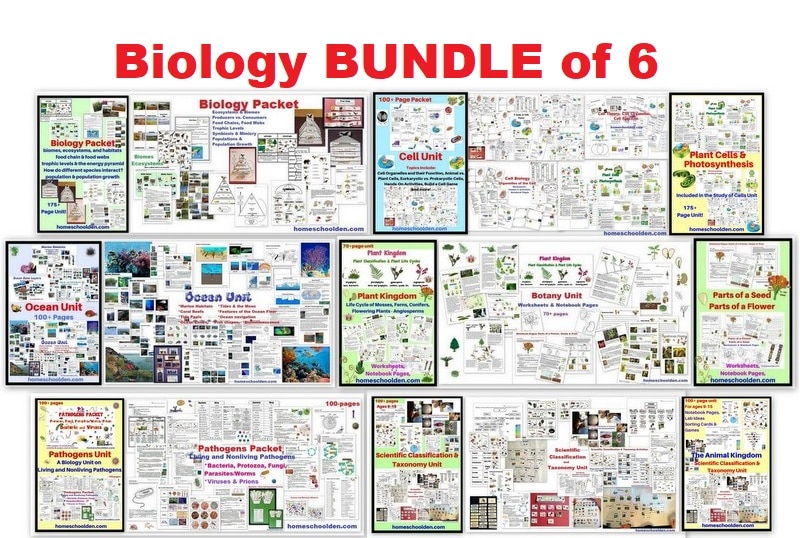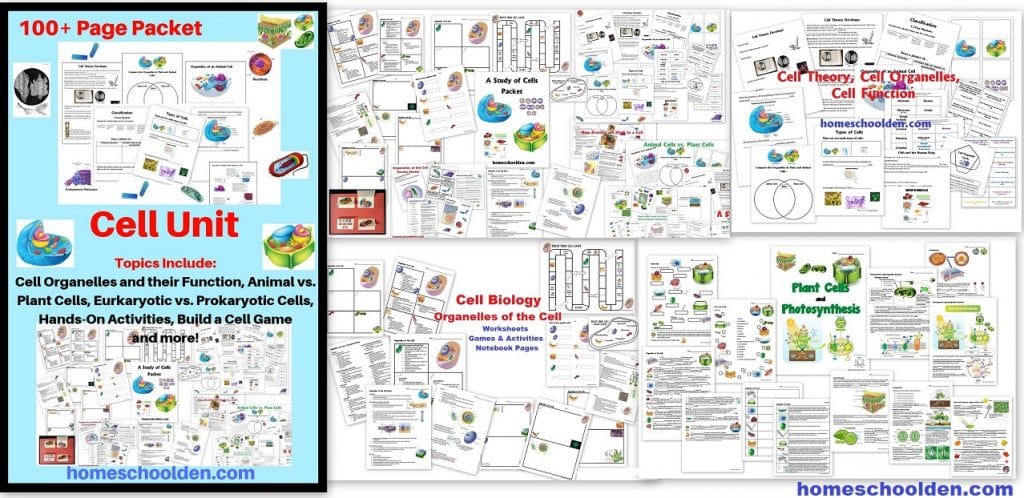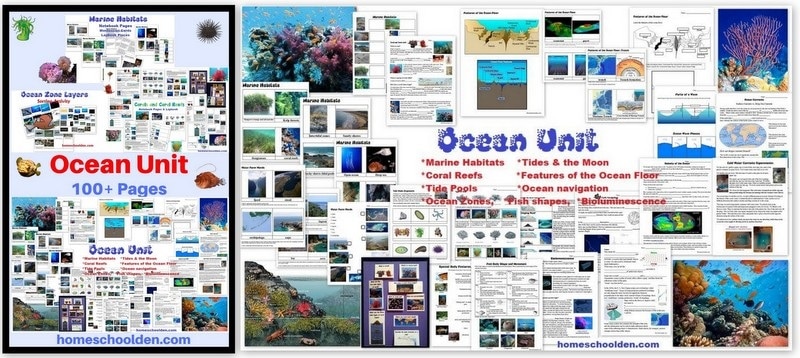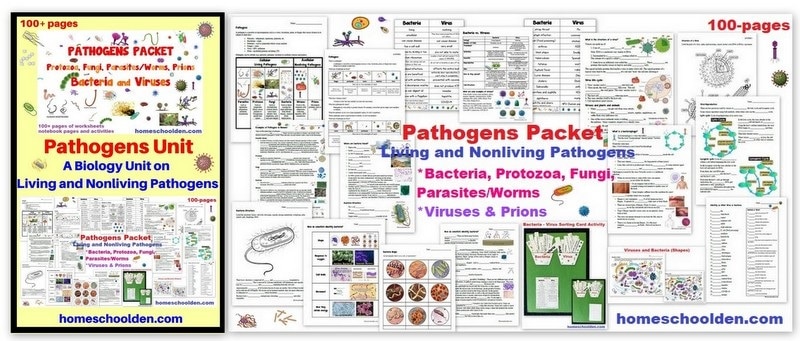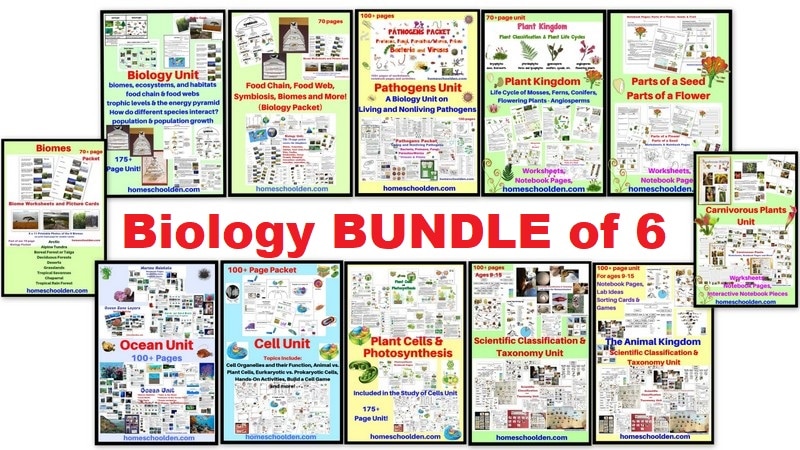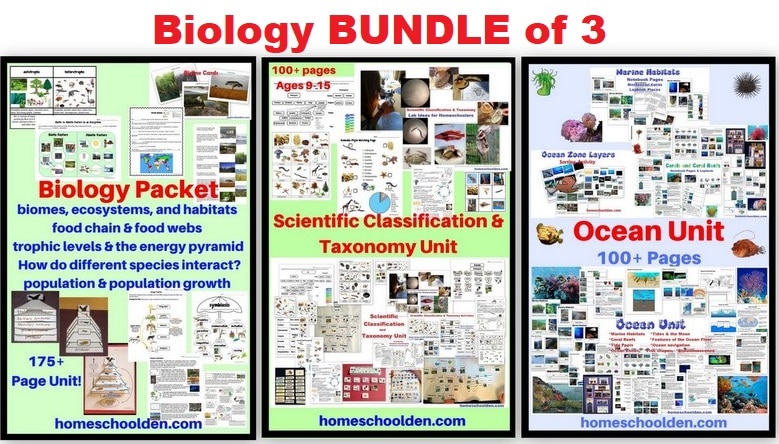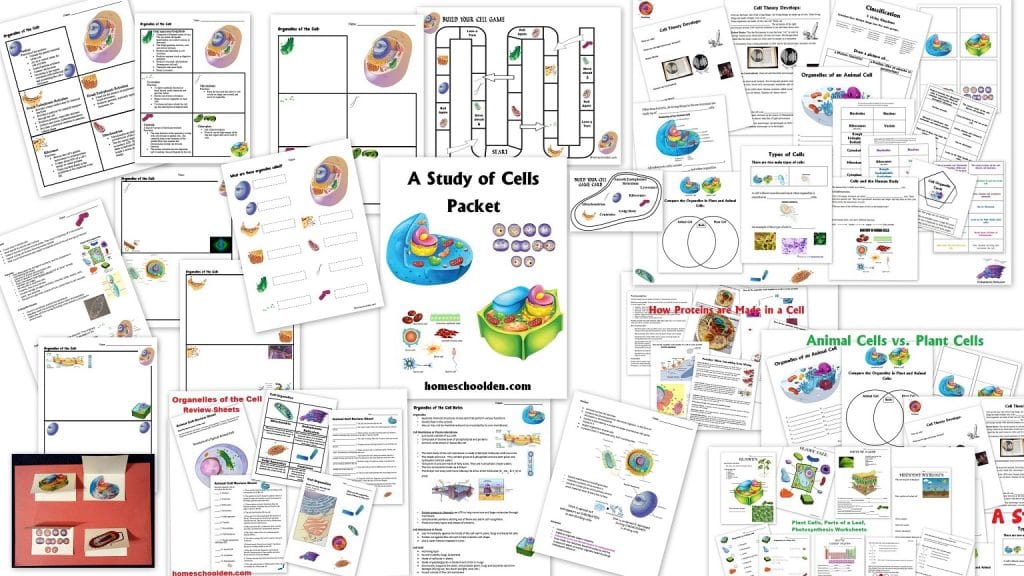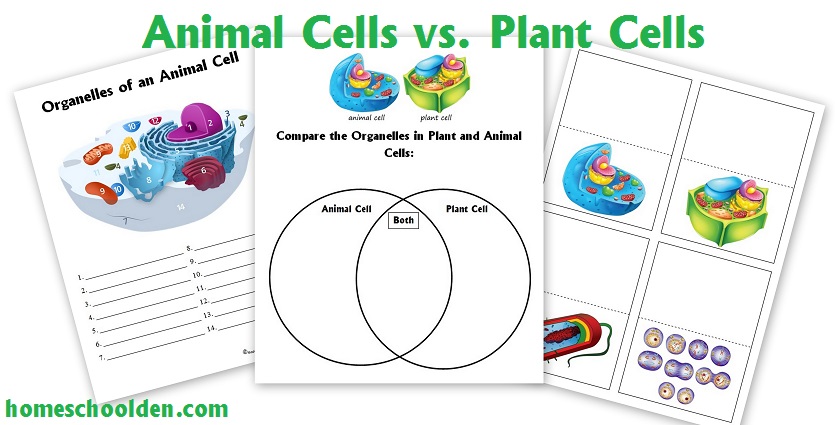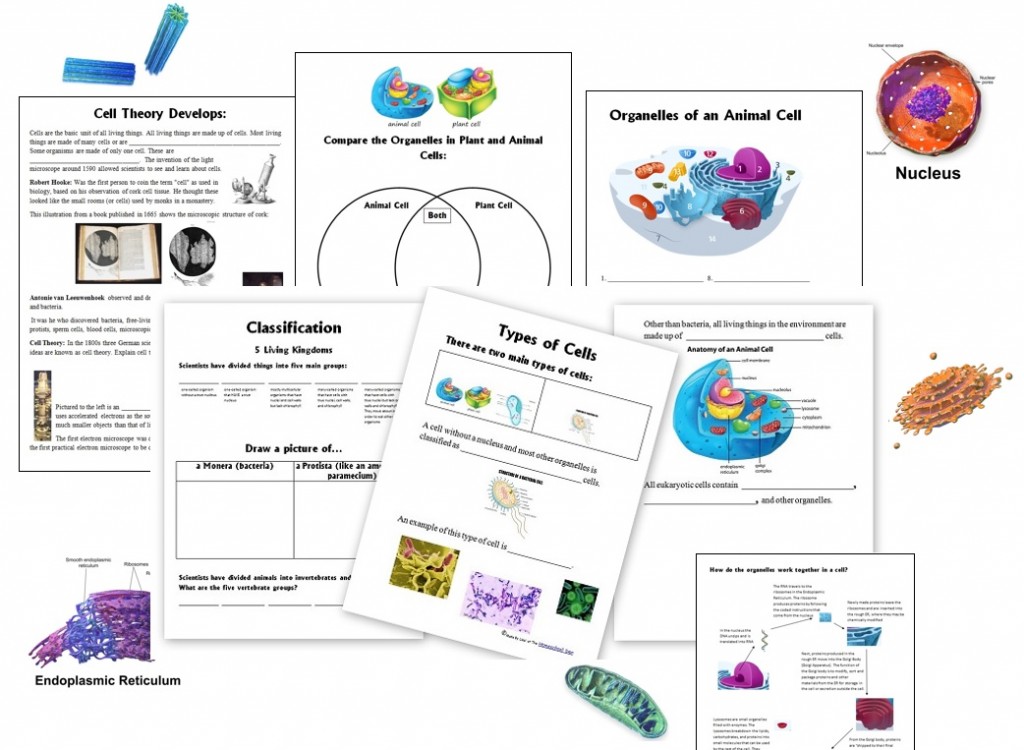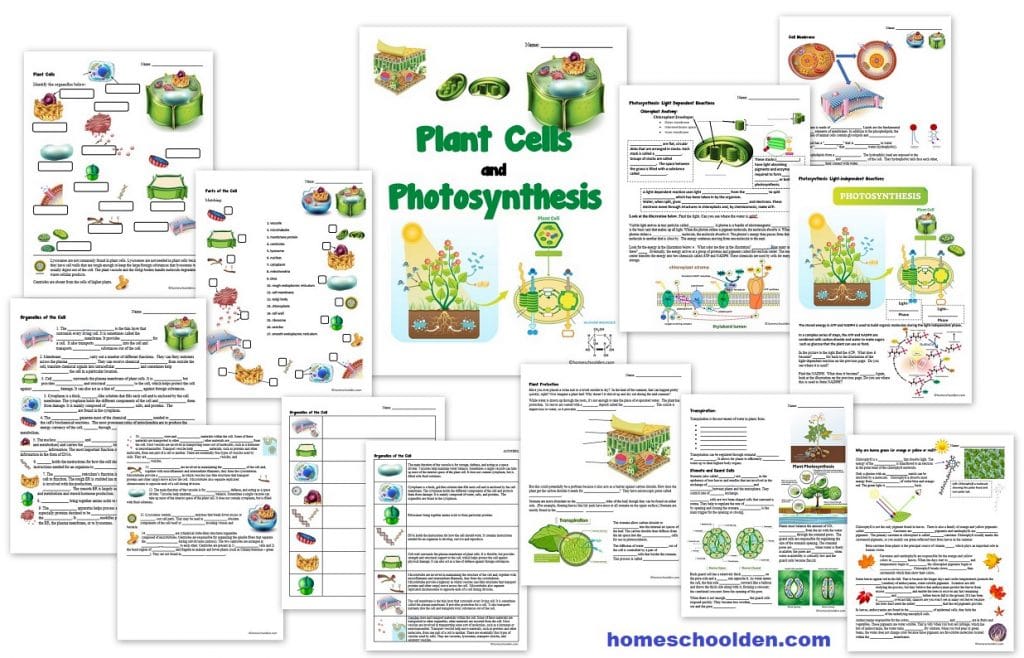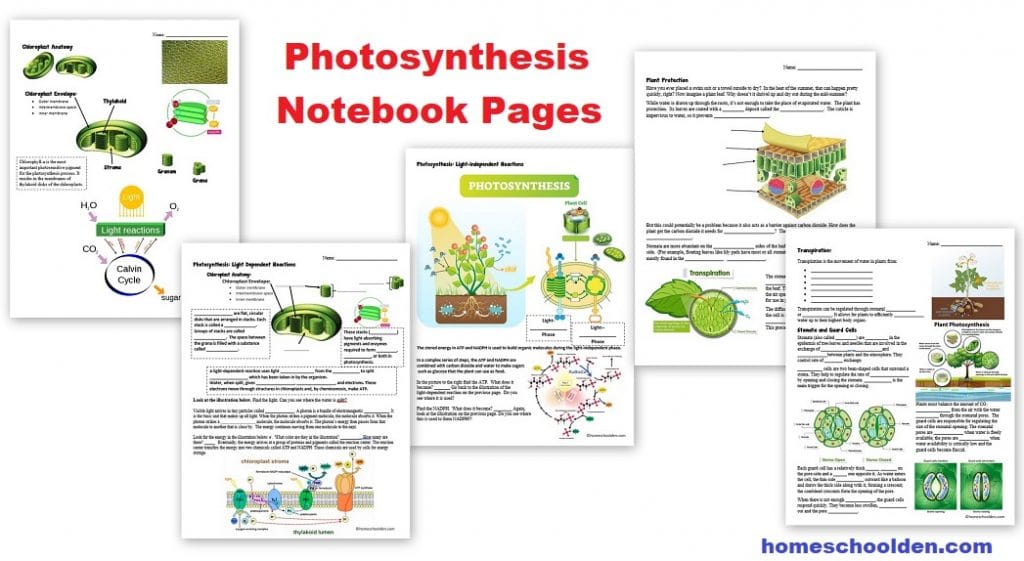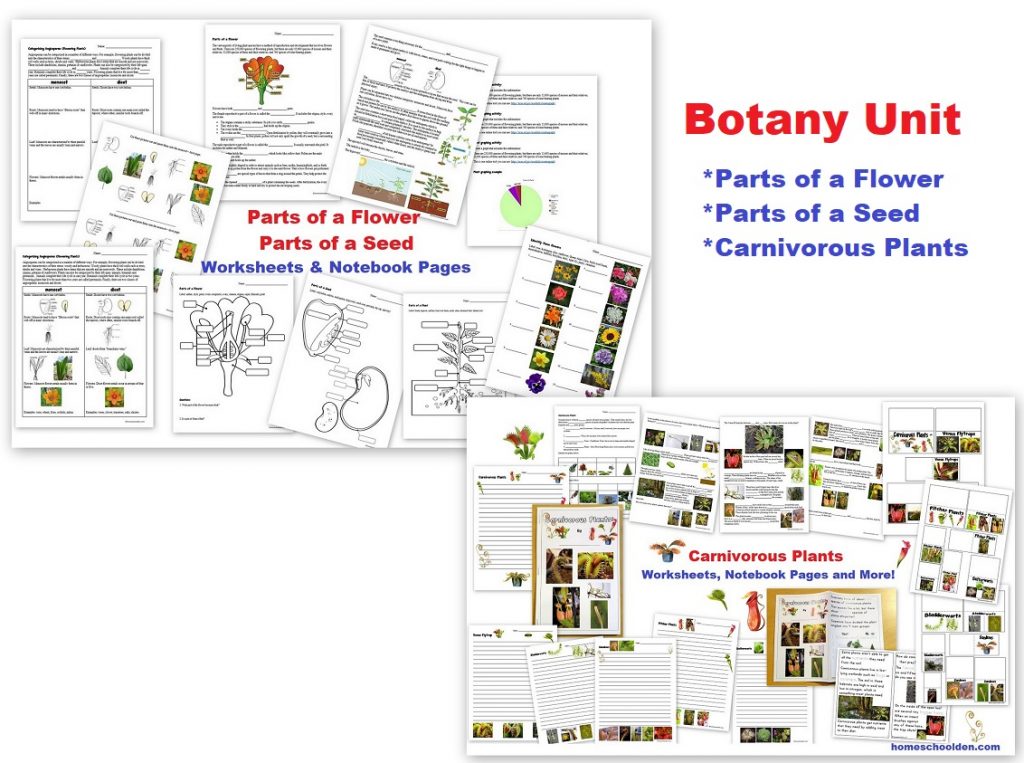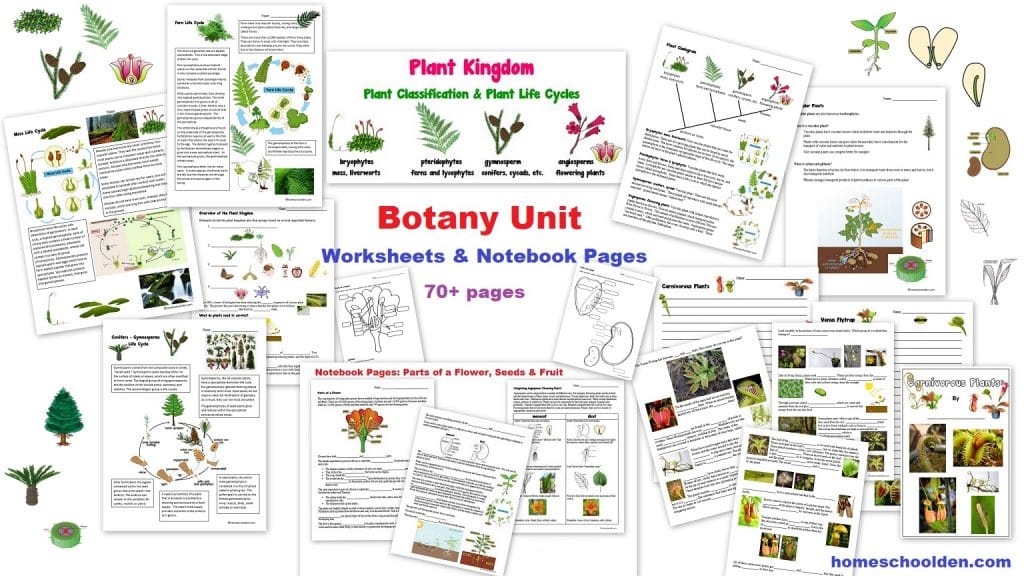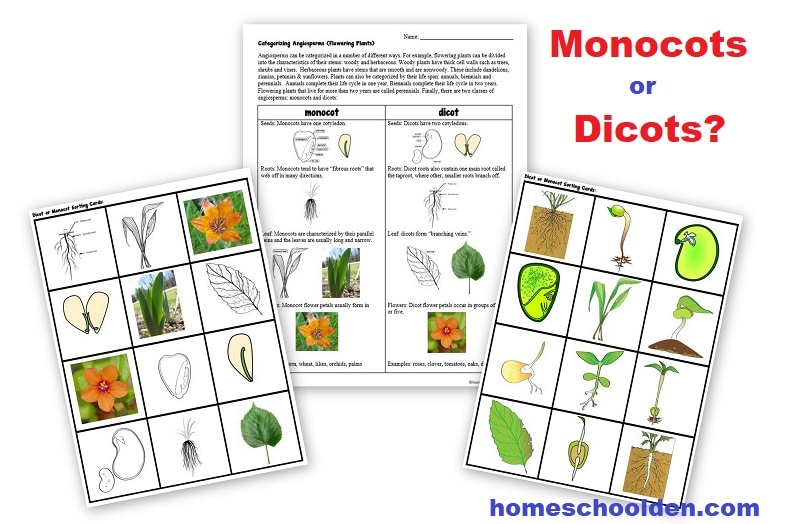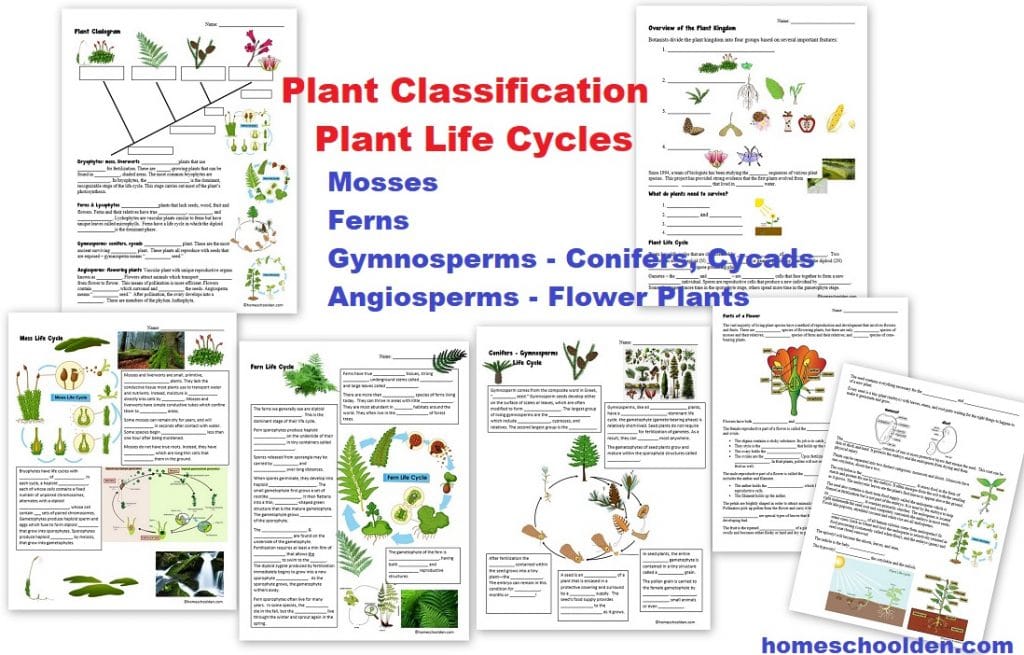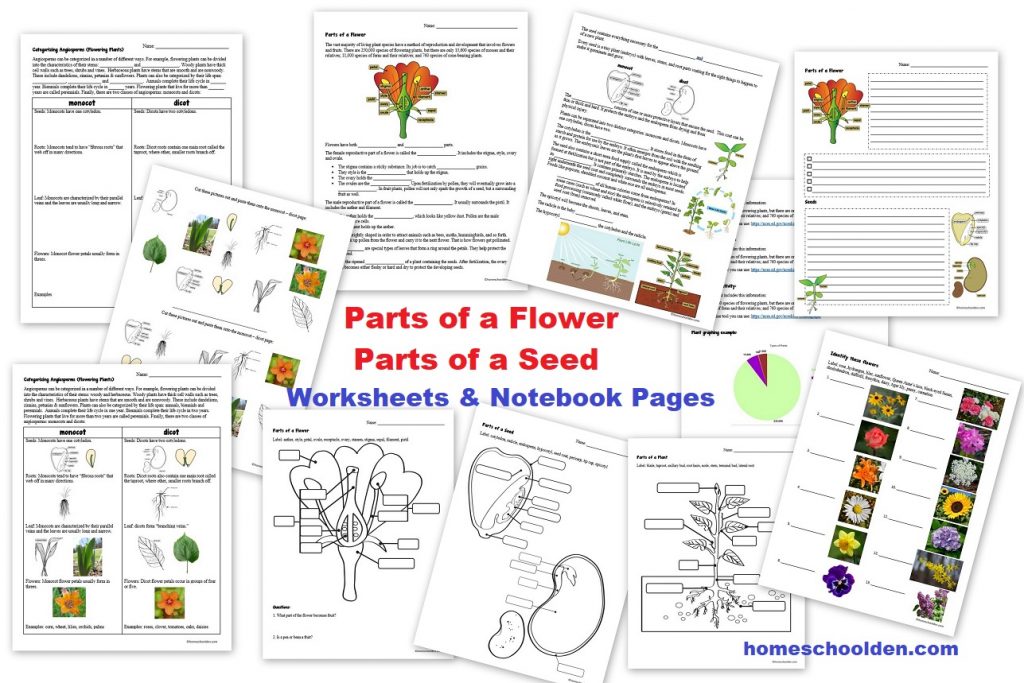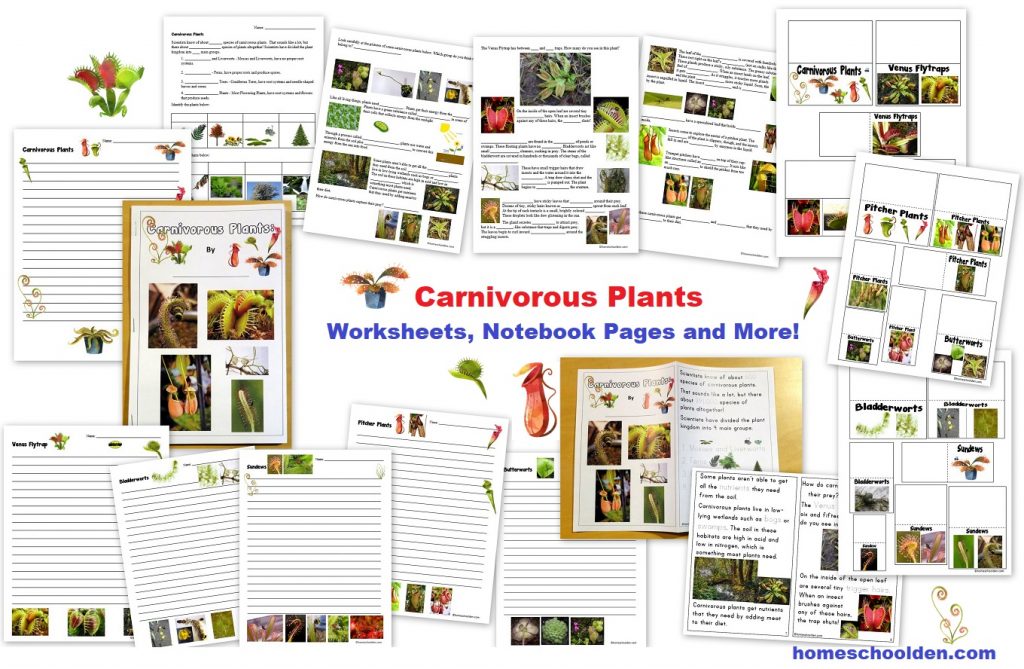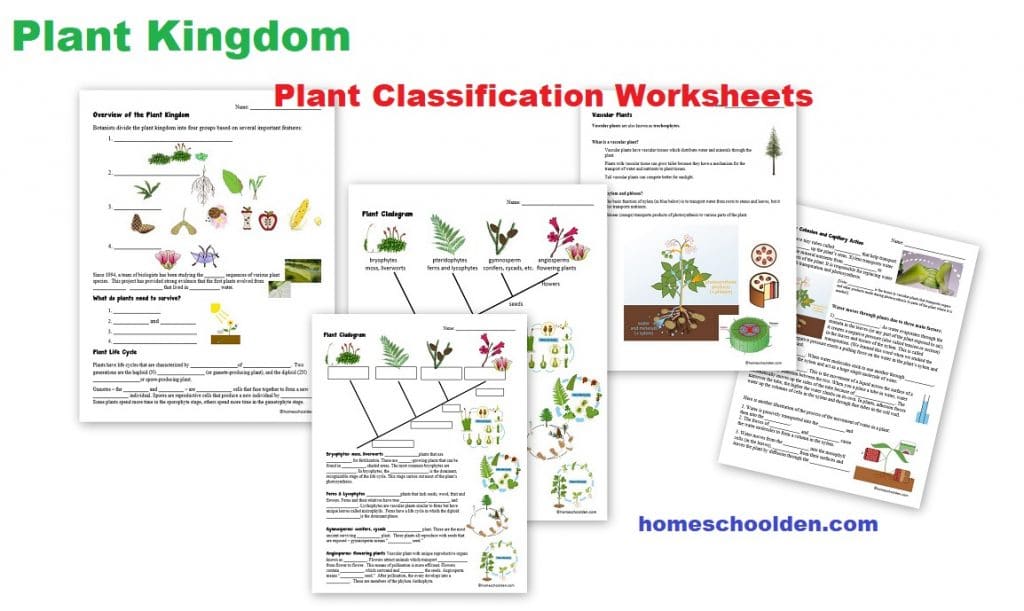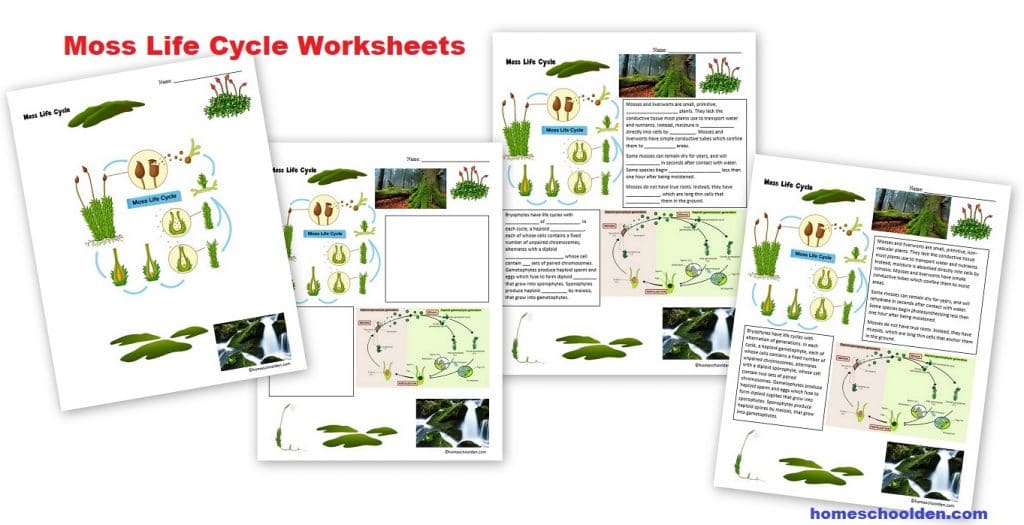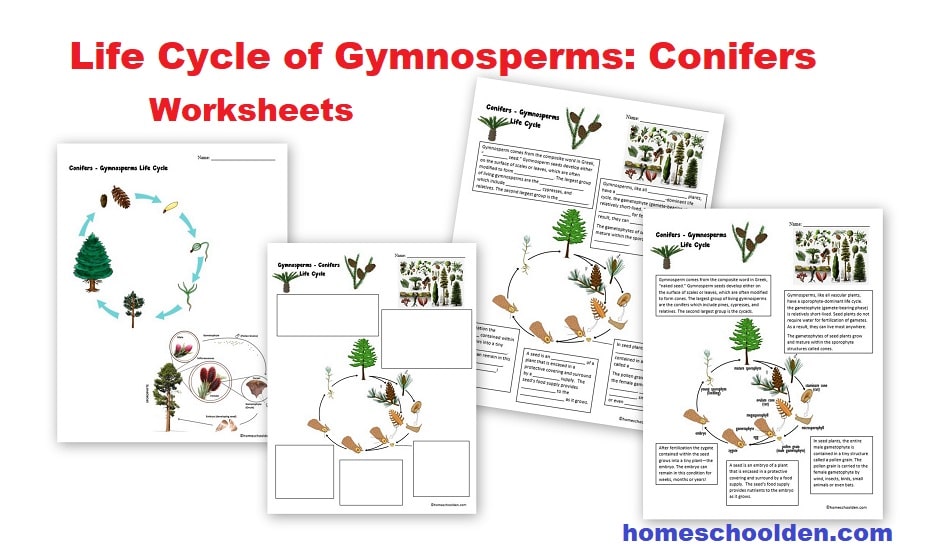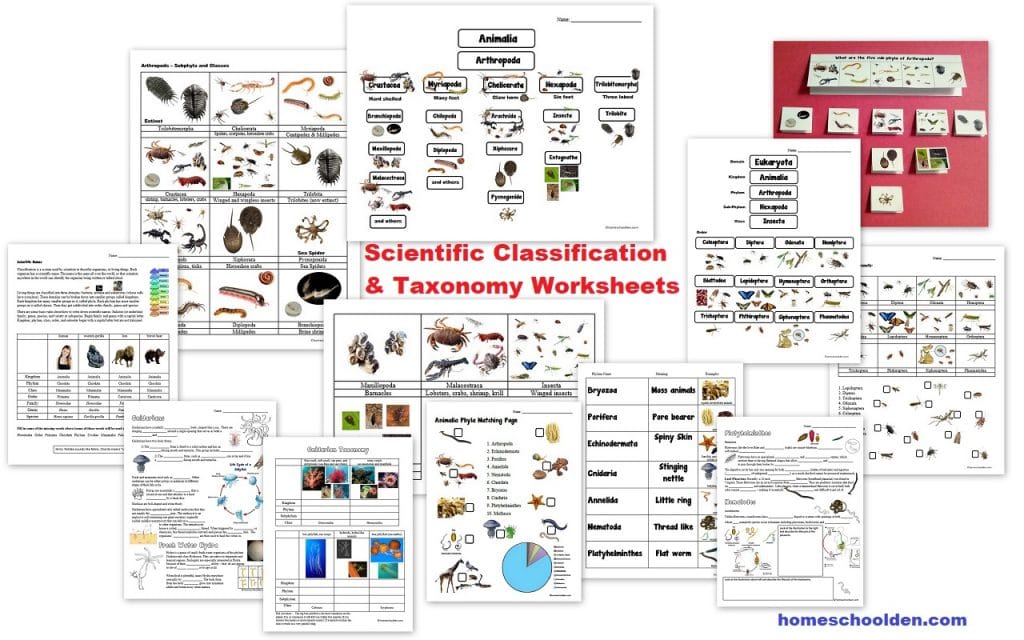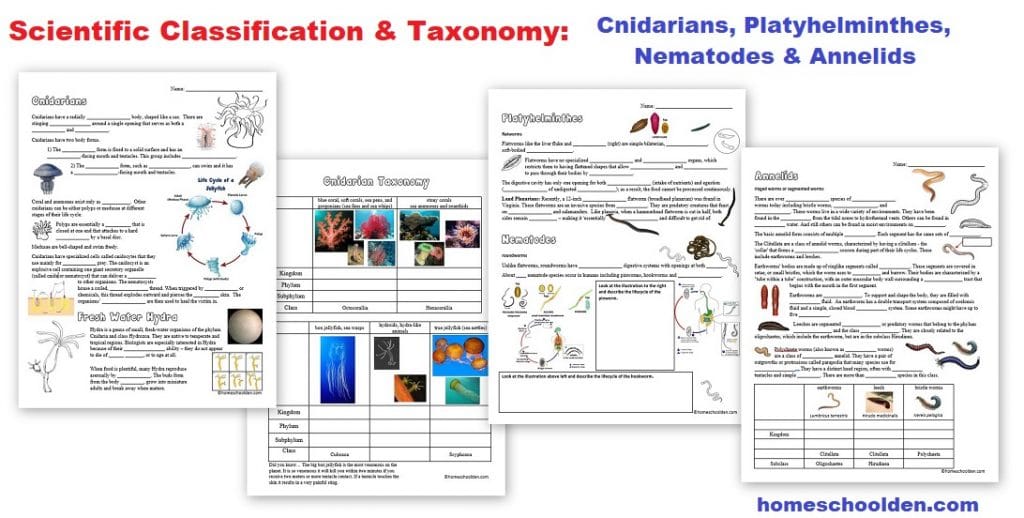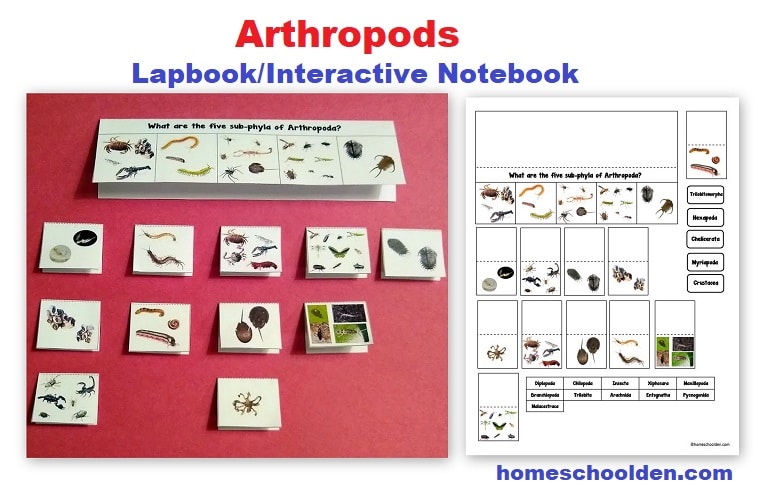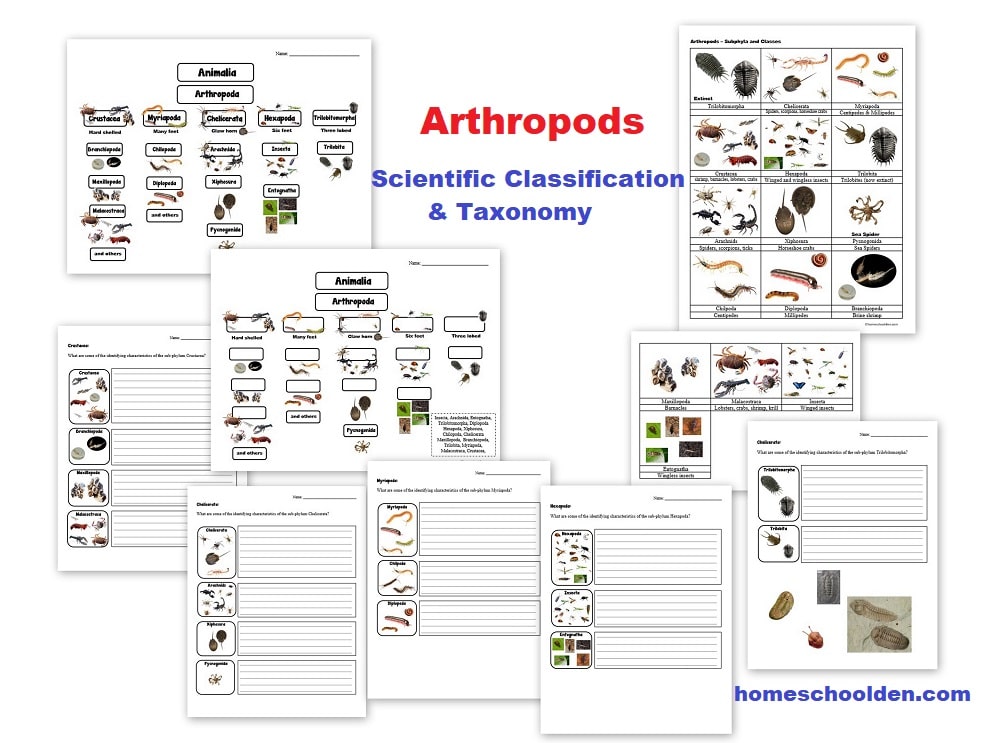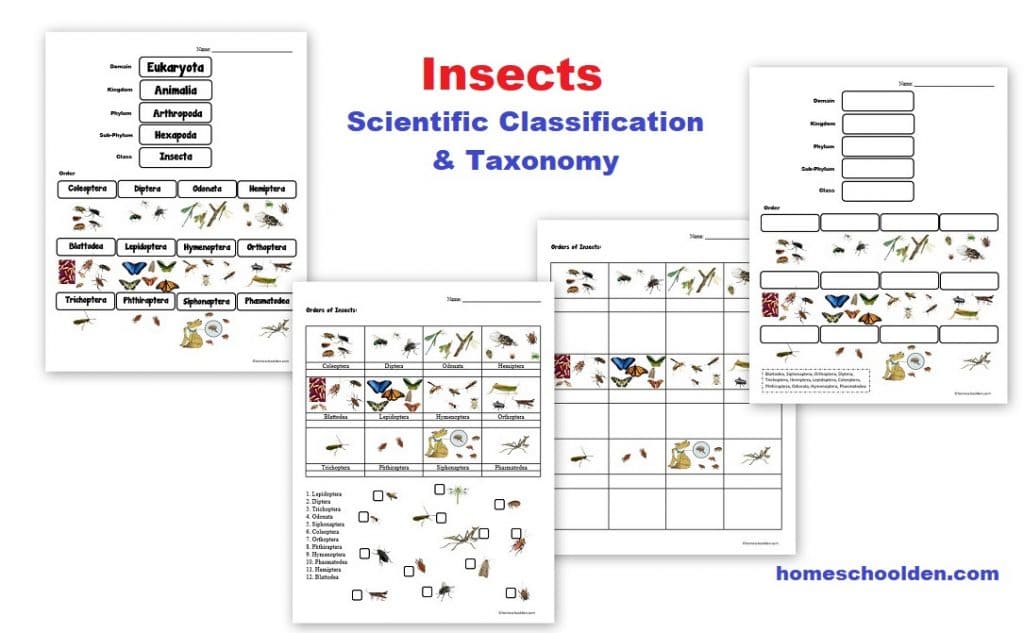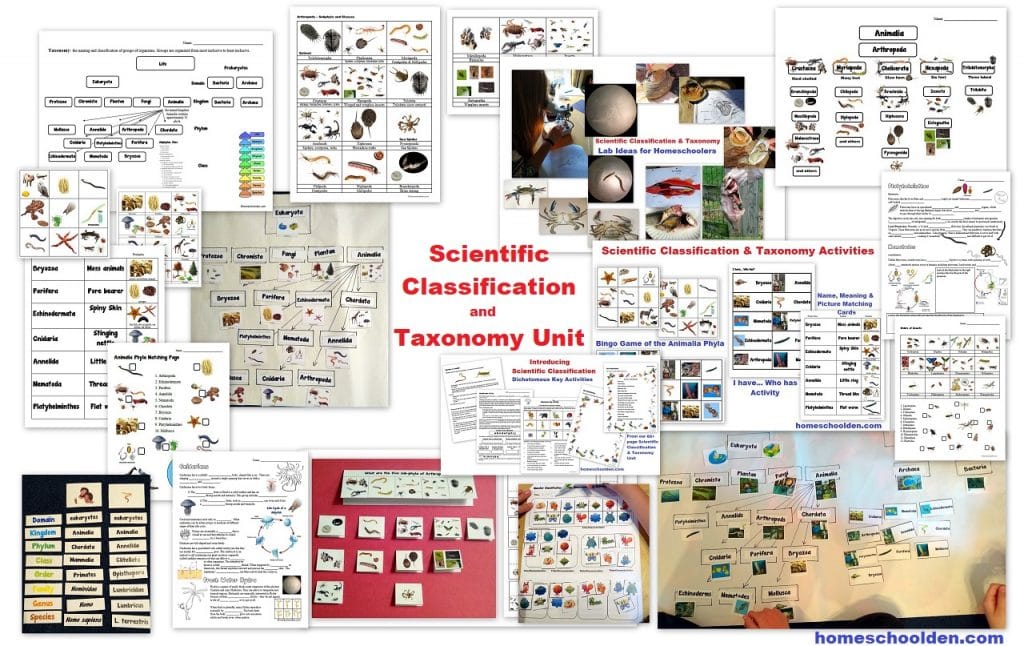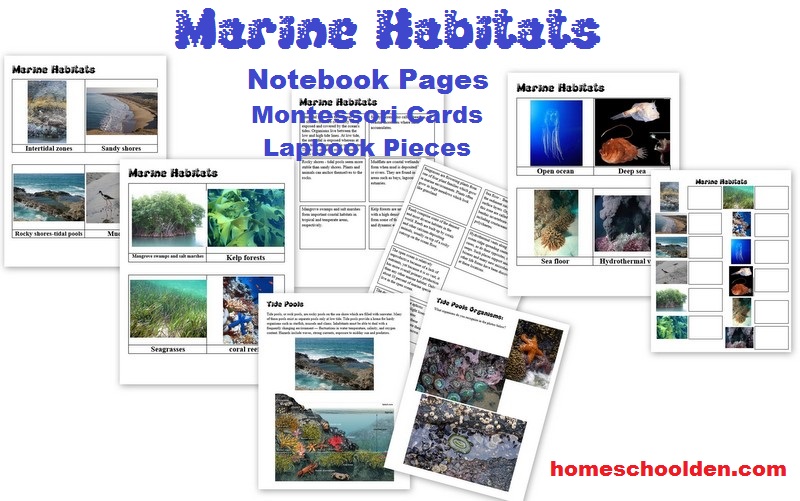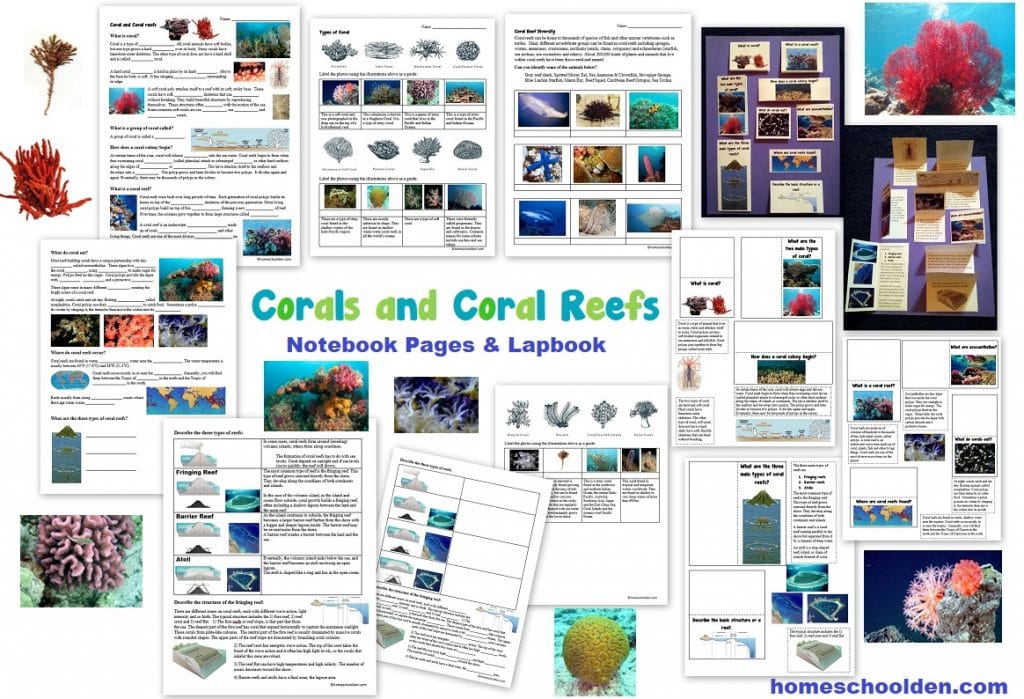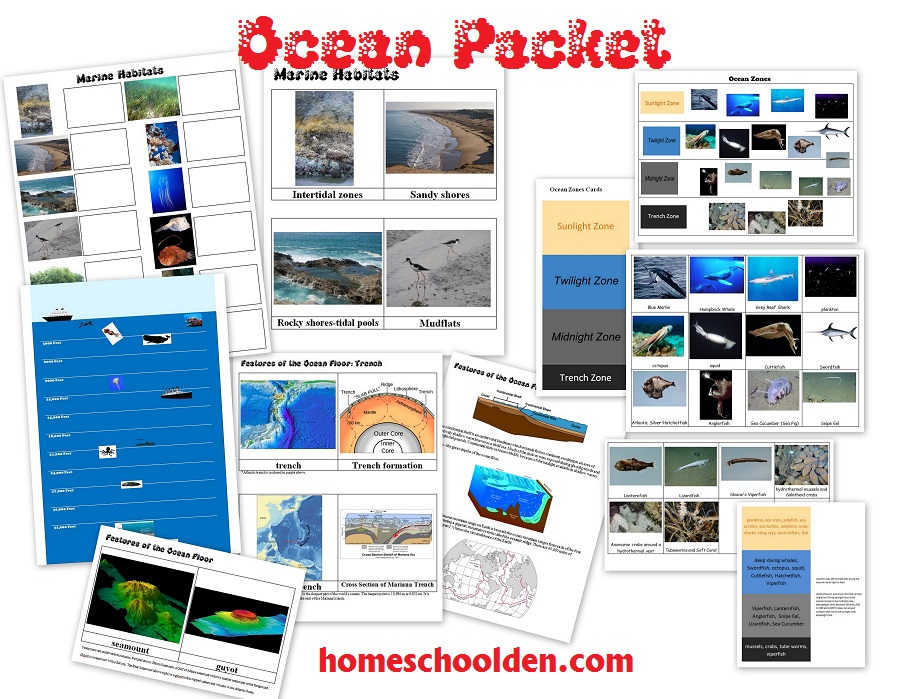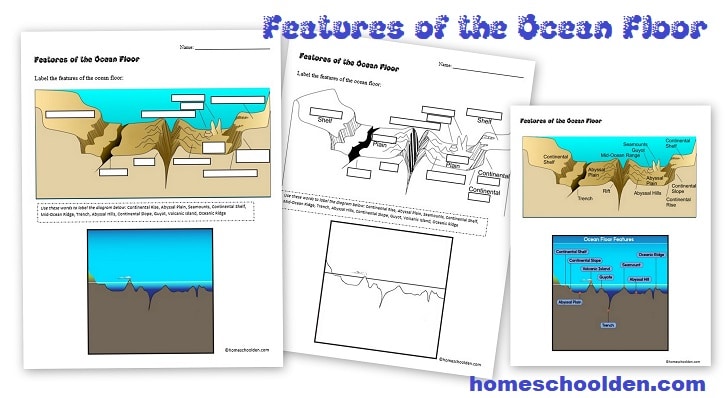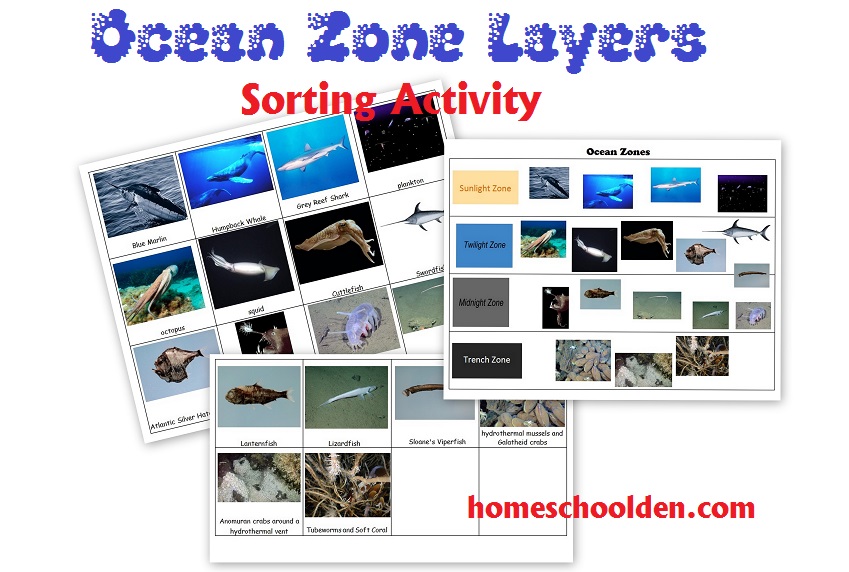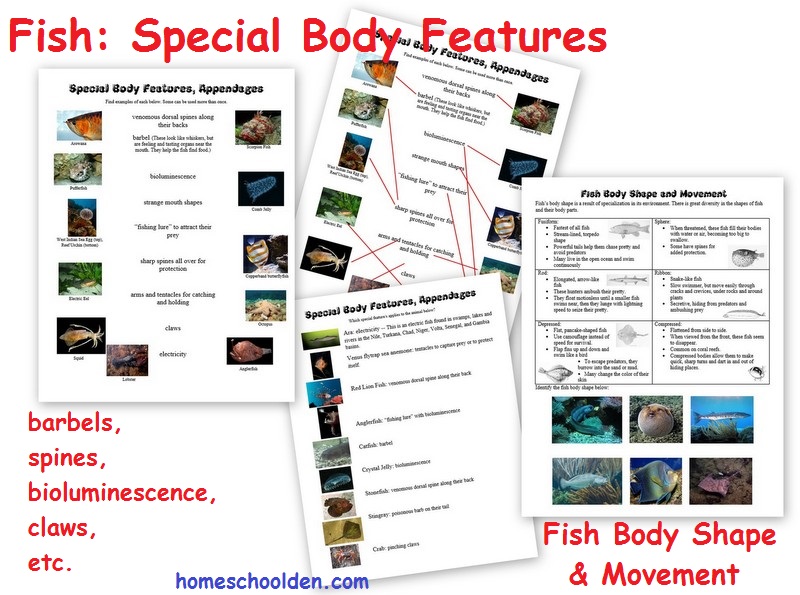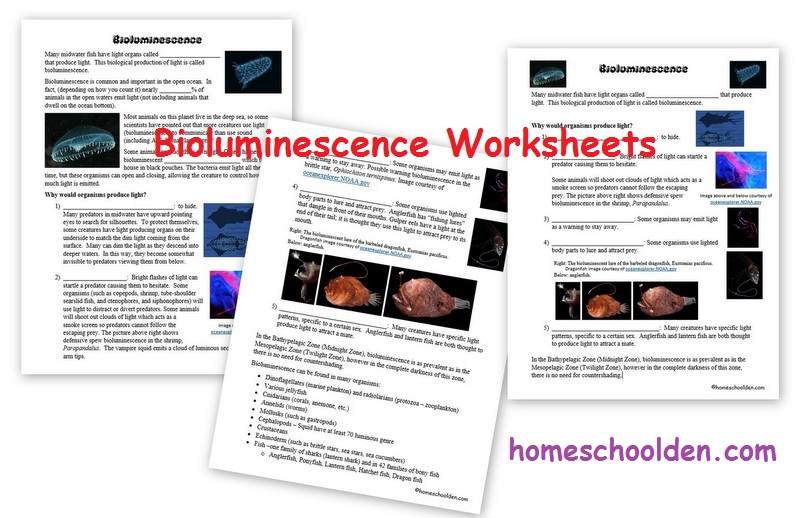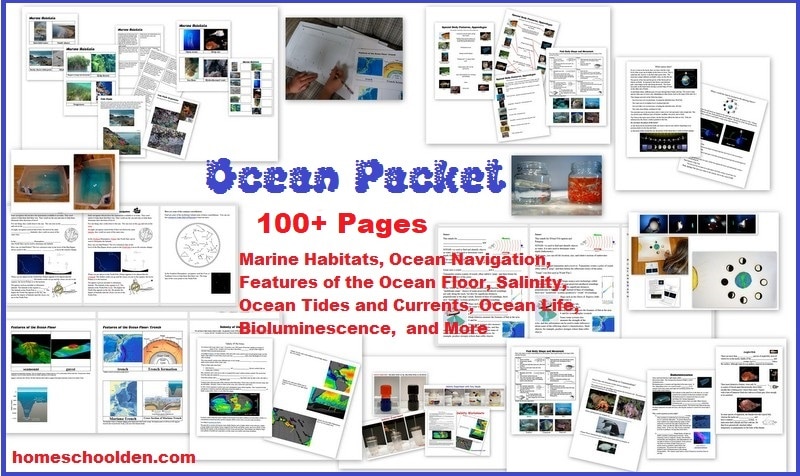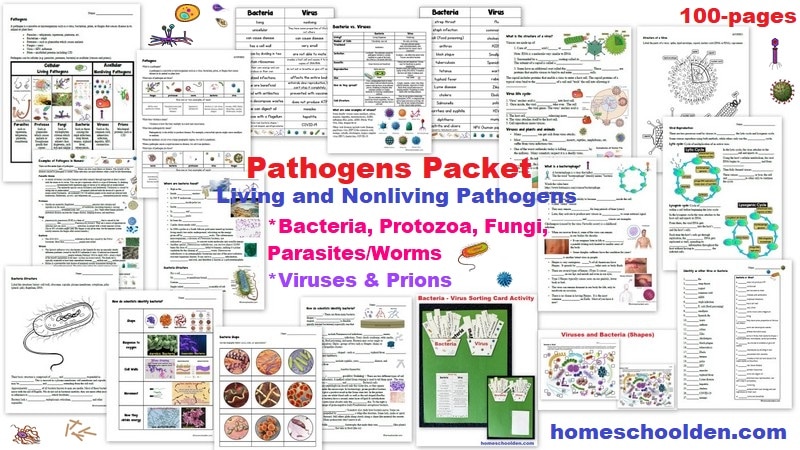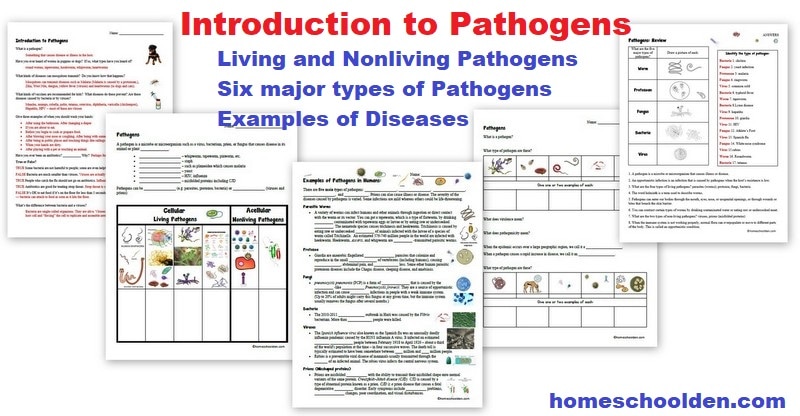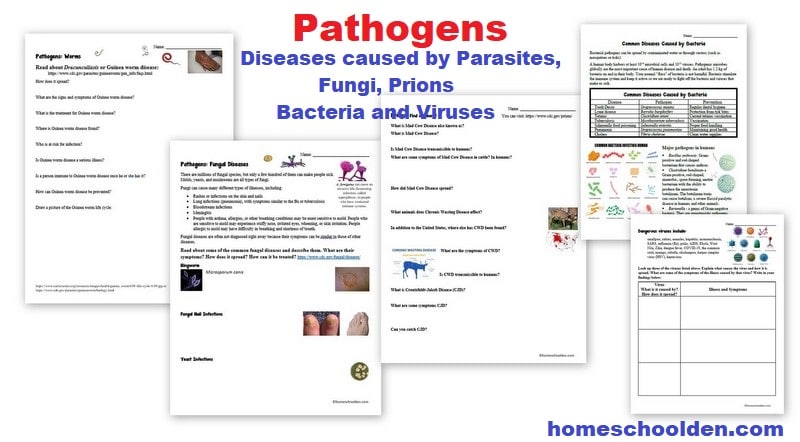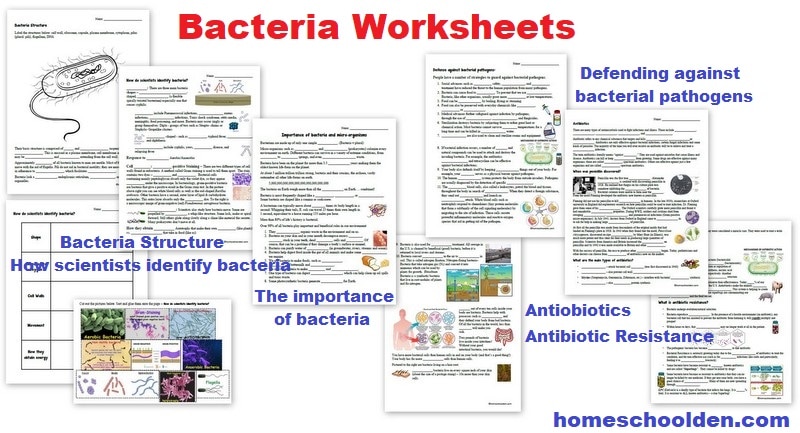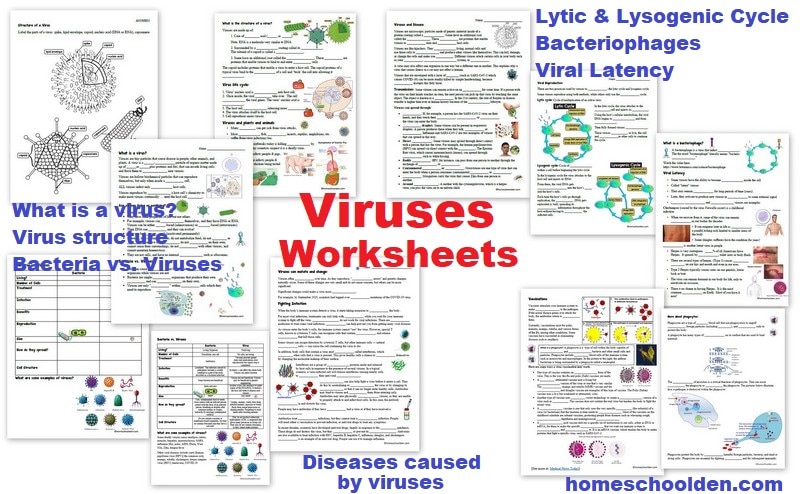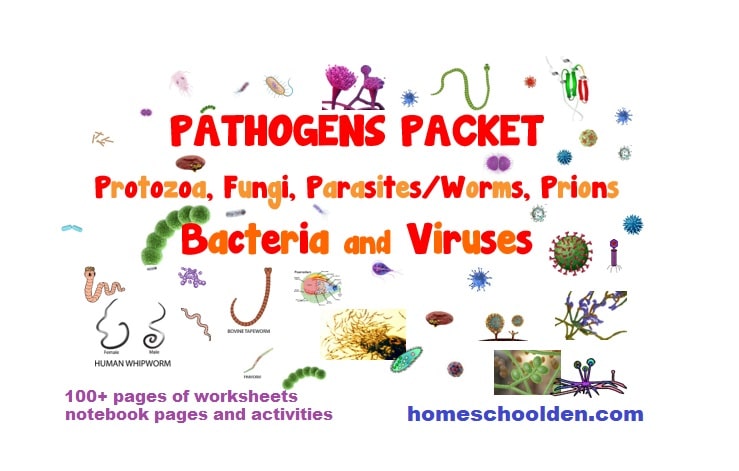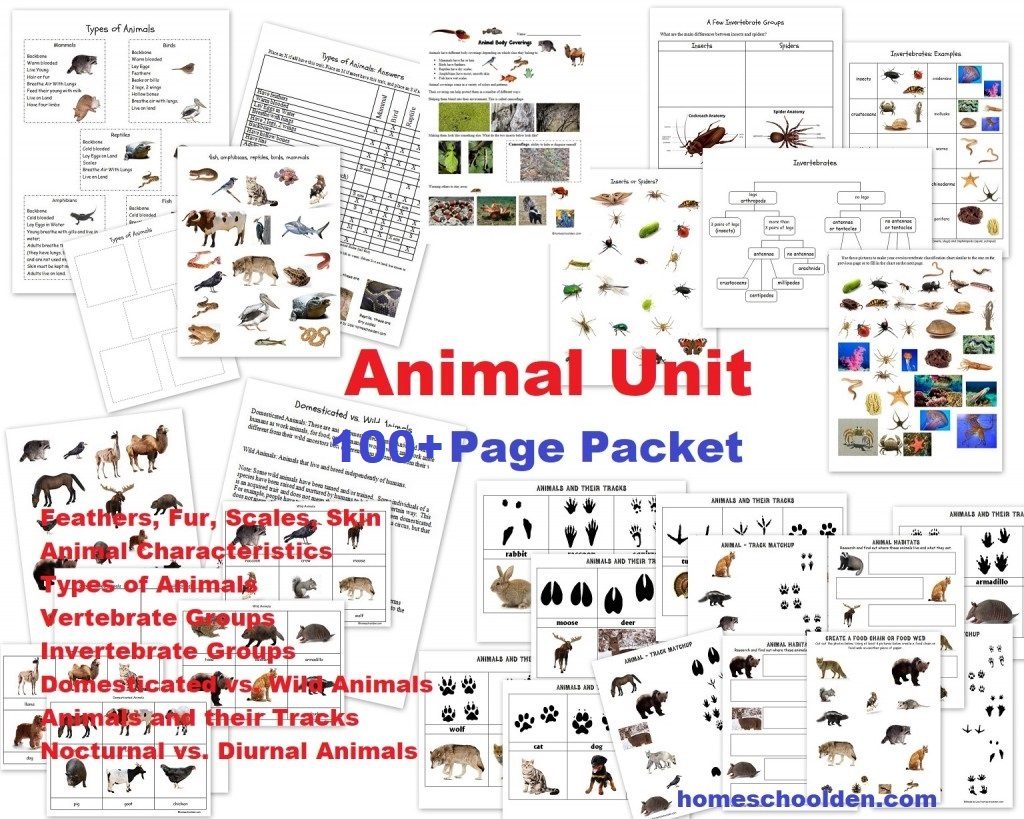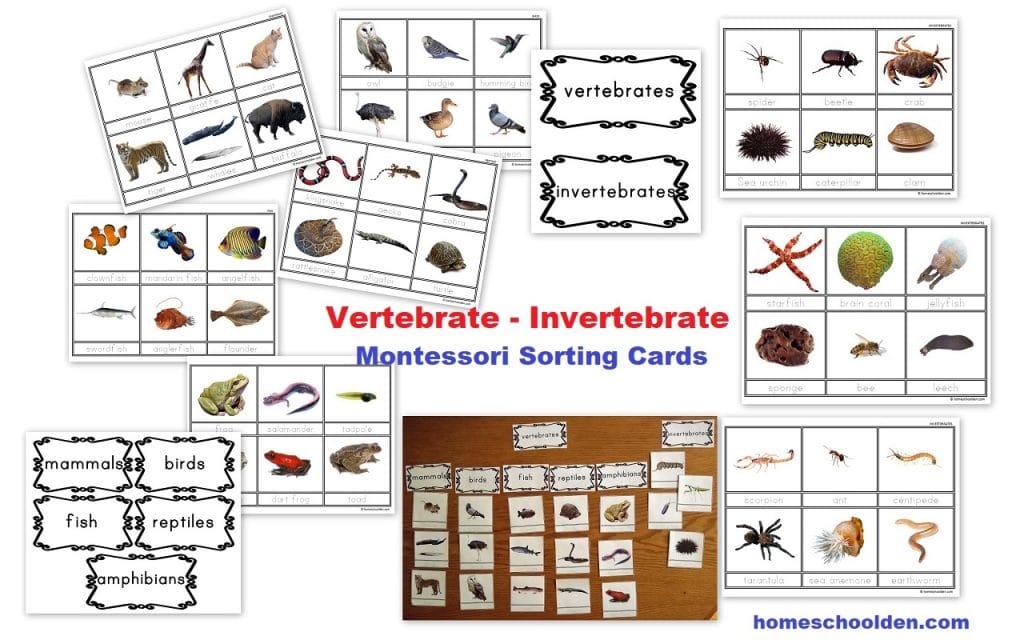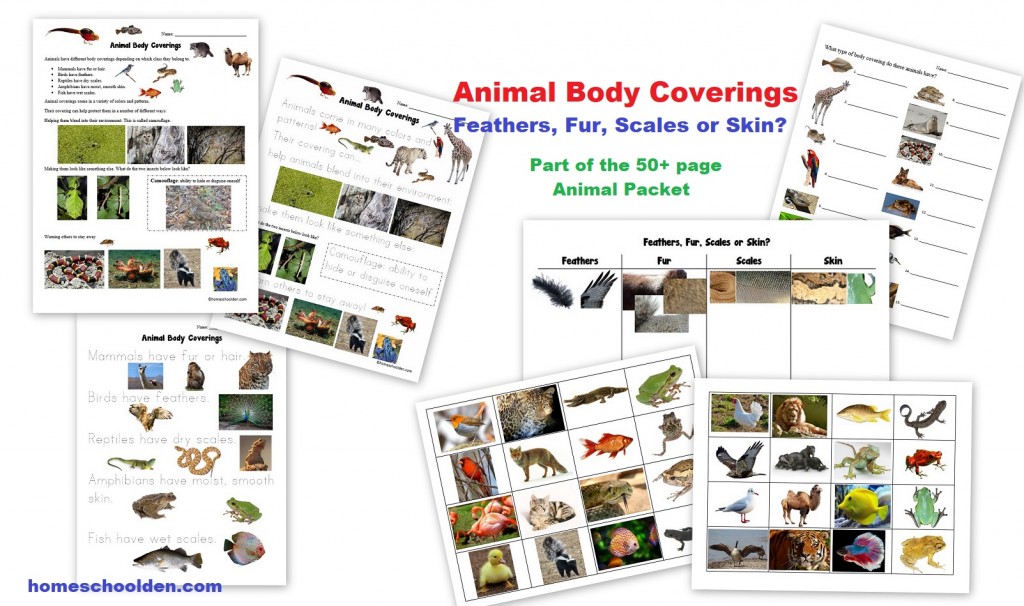Biology Unit Update!
 175+ Page Biology Packet on Ecology
175+ Page Biology Packet on Ecology
-
Ecosystems and Biomes
-
Feeding Relationships
-
Food Chains & Food Pyramids
-
Trophic Levels & the Energy Pyramid
-
How different species interact (relationships between living organisms and their physical environment)
-
Population and Population Growth
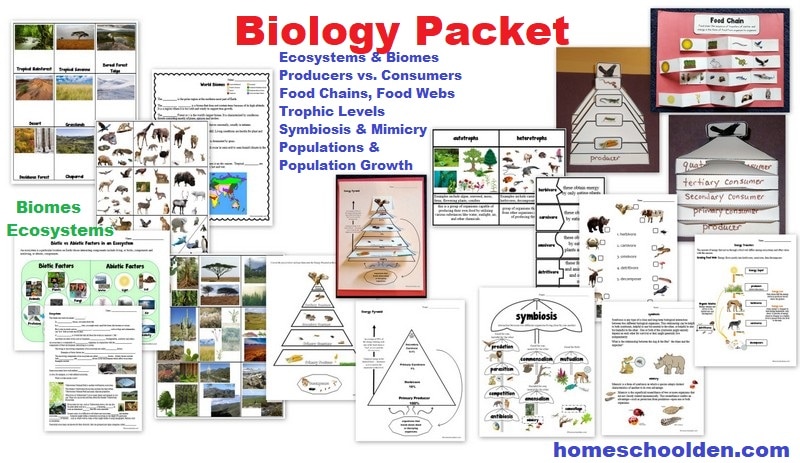
What is the difference between a biome, ecosystem, and habitat? What is the difference between a food chain and a food web? What are trophic levels? What is the energy pyramid? What is symbiosis? How do different species interact? What in the world is amensalism or antiobiosis?! These are some of the things we covered in our biology unit!
How We Started Our unit on Biomes: When we first did this unit, we started with an overview of the main biomes. The kids could come up with the names for all of them, though not the more specialized words (like taiga or chaparral.) In our biology packet, we have several different notebook pages on the main biomes. The kids did the “fill in the blank” version as we highlighted some of the main features of each biome (there’s also one that is completely filled in, one that just has the biome name and students can write in their own information, and a matching page (which my kids did a couple of weeks later):
In the packet, there are full-sized (8 1/2 by 11) photos of each biome. I chose to print 4 per page which worked well for our needs. I laminated them and cut them apart.
What are the major biomes?
- Arctic
- Alpine Tundra
- Boreal Forest or Taiga
- Deciduous Forests
- Deserts
- Grasslands
- Tropical Savannas
- Chaparral
- Tropical Rain Forest


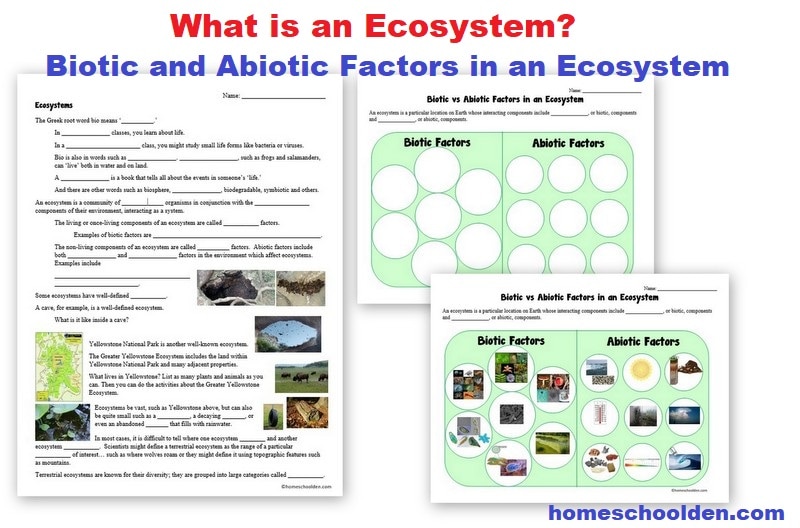
Biomes Sorting Cards: Recently, I added in some biomes sorting cards. Before we did this, we talked about the biotic (living) and abiotic (non-living) factors. Then we did the sorting cards with biotic (animal and plant) cards and abiotic factors (soil, temperature, length of the winter/summer and so forth).
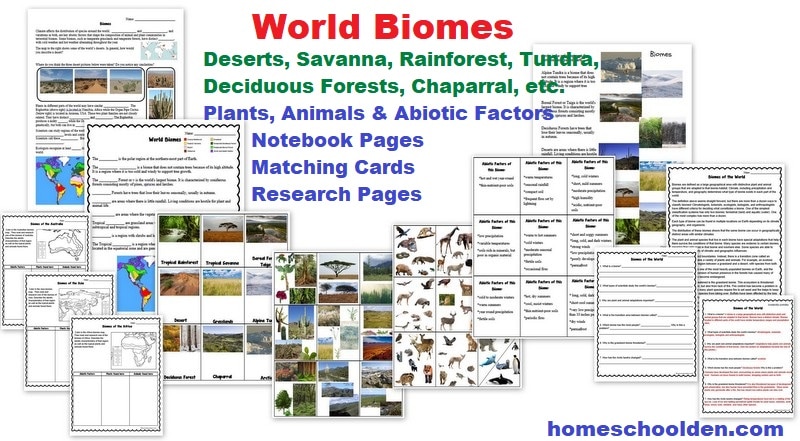
My kids used the biomes cards as they filled out the chart on the right below.
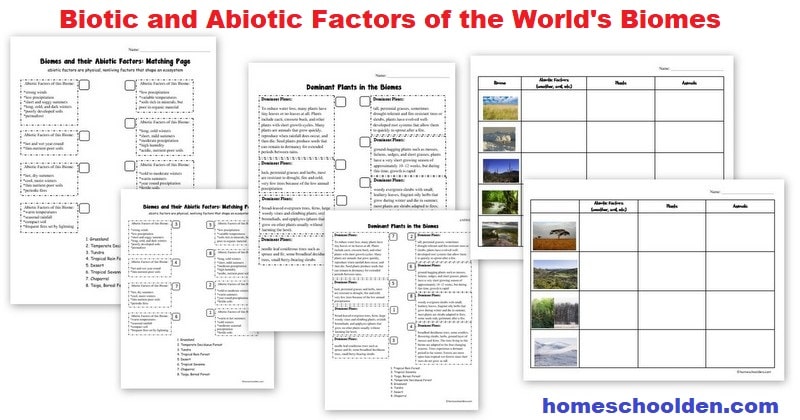
 How different organisms interact:
How different organisms interact:
Feeding Relationships & Biological Interactions

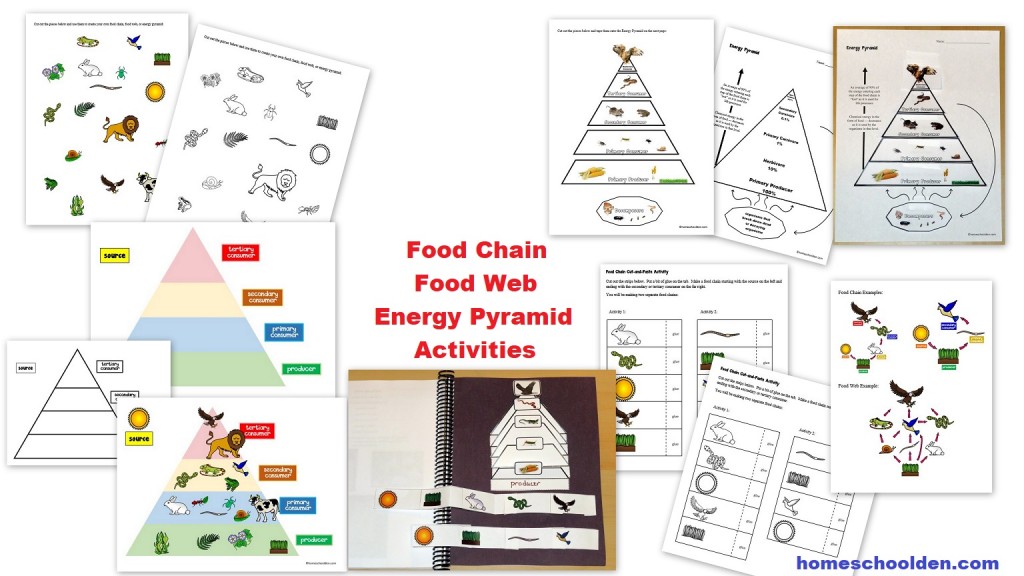
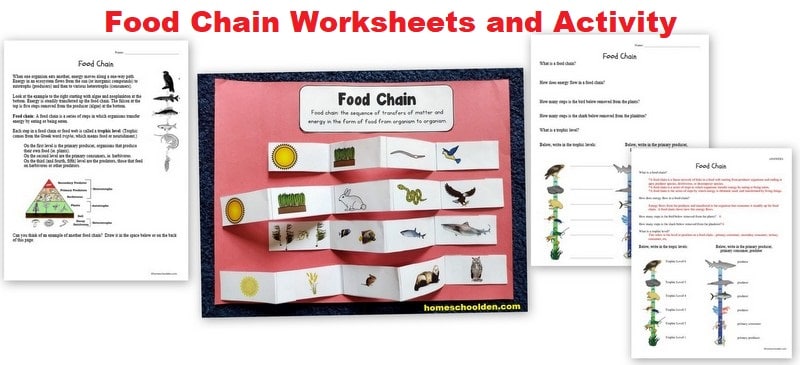
From there we discussed the difference between habitats and ecosystems. We talked about the difference between producers and consumers (autotrophs and heterotrophs). And, we talked about the different feeding relationships: herbivores, carnivores, omnivores, detritivores and decomposers.
There are some self-correcting review cards for these terms as well:

We spent time talking about food chains, food webs, and the energy pyramid.
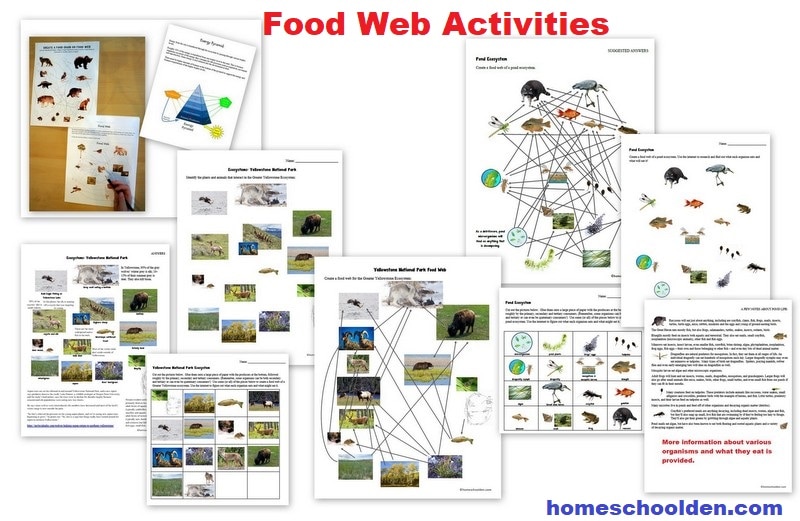
In the last part of this unit, we spent quite a bit of time learning about biological interactions:
- Amensalism
- Predation
- Competition
- Antibiosis
- Mutualism
- Commensalism
- Parasitism
We start with a general discussion of symbiosis and I also introduced the animal defense – mimicry. Then we go into more detail about the different biological relationships: This relationship can be helpful to both symbionts, helpful to one but neutral to the other, or helpful to one but harmful to the other. One or both of the symbionts might entirely depend on each other for survival or they might generally live independently.
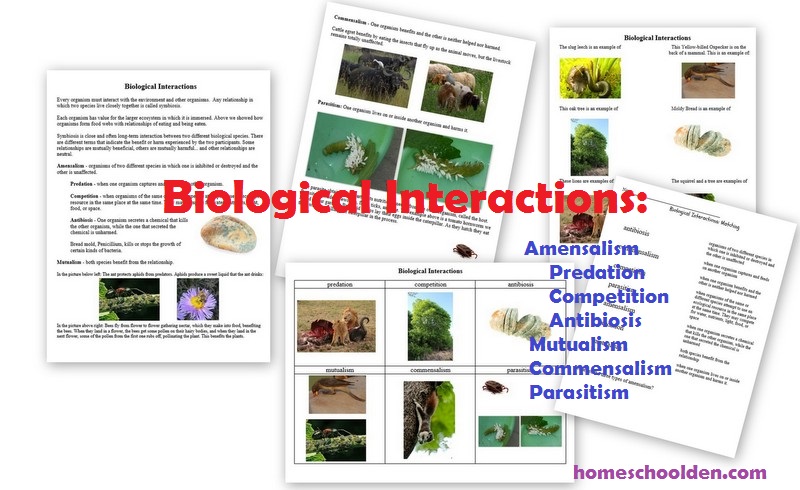
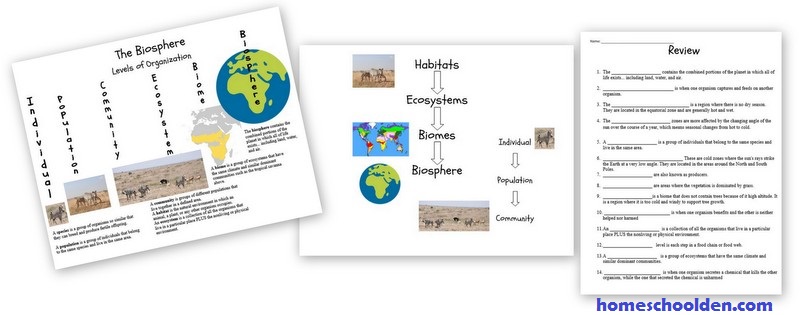
What age is the Biology Unit for? This unit is probably best for middle school or early high school. The first time we did this unit, my kids were in middle school (and my youngest was in elementary). I believe they were 12, 10 and 8 (For the most part, it was too challenging for my youngest/8-year-old at the time, though she loved the documentaries we watched and participated in the hands-on activities). If you have younger kids, you might want to do the Animal Unit instead.). We reviewed various concepts from this unit a couple of years later when my kids were 14, 12 and 10. My youngest (now age 13) will be doing this unit in-depth this coming fall and her sister (age 15) also wants to review some of this material because it was covered really quickly in her high school biology class a couple of years ago (We used Thinkwell Biology for high school biology).
Note: I wanted to let you know that I did a big update of the Biology Packet this summer. I added well over 50 pages and have new materials on ecosystems and on populations and population growth. If you purchased the Biology Packet or one the Biology Bundles previously, be sure to check your PayPal email for the update from SendOwl or send me an email and I will re-send you your download link! ~Liesl
The Biology Packet is included in the Biology BUNDLE (see details below or here)
These units are PDF downloads. Be sure to check your PayPal email address for the download link. If you have any questions or problems feel free to email me! You should get your automatic download link from SendOwl within a few minutes. If you don’t, be sure to email me if you need me to send the link to you again! Here are some answers to some Frequently Asked Questions. ~Liesl
Biology Packet
$8.99
Biology BUNDLE OPTIONS:
Visit this Biology Bundle Page for more details (and lots more pictures!)
$44.99 Biology BUNDLE of 6: 1) Biology Unit (Biomes, habitats, food chains/webs, feeding relationships) 2) Scientific Classification & Taxonomy Packet 3) Ocean Unit & Layers of the Ocean/Ocean Zone Activities 4) Cells Unit 5) Botany Unit 6) Pathogens Unit – Bacteria, Protozoa, Fungi, Parasites/worms; Viruses and Prions
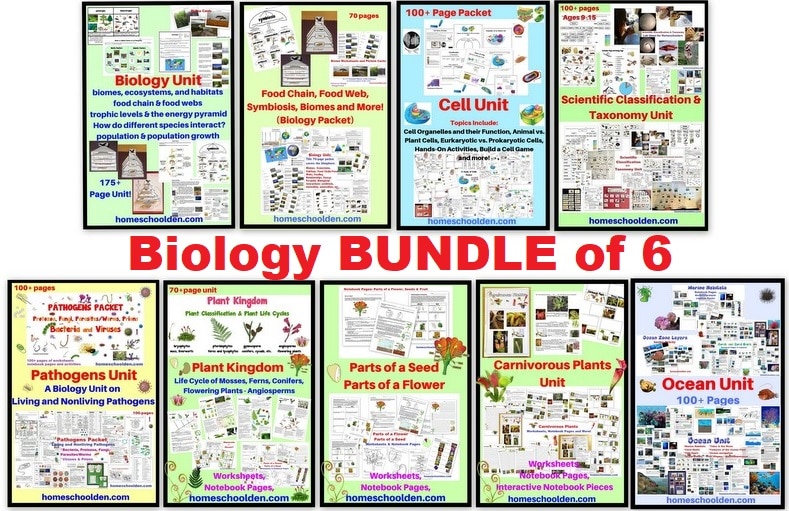
$8.99 Biology Unit: Biomes, habitats, ecosystem, biological interactions, feeding relationships (170 pages)
$8.99 Cells Unit (150+ pages) – cell theory, prokaryotic vs. eukaryotic cells, animal vs. plant cells, organelles of the cell, chloroplast anatomy, the layers of a leaf, photosynthesis and more.
$7.99 Botany Packet — (80 pages) Plant Classification, Life Cycle of the Moss, Fern, Conifer, Angiosperms, Parts of a Flower, Parts of a Seed, Seed & Fruit Development, Monocots vs Dicots – plus Carnivorous Plants Mini-Unit
$8.99 Ocean Unit – Layers of the Ocean/Ocean Zone: (100+ pages) Marine Habitats, Coral Reefs, Tide Pools, Water Form Words, Ocean navigation, Features of the ocean floor, salinity, ocean tides & currents, ocean life, bioluminescence & more!
$7.99 Scientific Classification and Taxonomy Packet (100 pages) dichotomous key activity, Linnaeus & the history of classification, learn the Animalia phyla (Annelids, Platyhelminthes, Nematodes, Cnidaria, Animalia, etc.)
![]() $8.99 Pathogens Packet (100 pages) – This unit covers the six major living and nonliving pathogens: bacteria, protozoa, fungi and parasites/worms as well as viruses and prions. The large majority of this packet goes into detail about bacteria and viruses.
$8.99 Pathogens Packet (100 pages) – This unit covers the six major living and nonliving pathogens: bacteria, protozoa, fungi and parasites/worms as well as viruses and prions. The large majority of this packet goes into detail about bacteria and viruses.
Again, you can see the Biology BUNDLE Page for lots more pictures!
Don’t forget to check your PayPal email address for the download link.
Biology: Cell Unit
Cell Unit: (Now more than 150 pages) The Cells Unit covers cell theory, prokaryotic vs. eukaryotic cells, animal vs. plant cells, the organelles of the cell, and now goes into more detail about chloroplast anatomy, the layers of a leaf, photosynthesis, and more.
Biology: Botany Unit
Botany Packet — Plant Classification, Life Cycle of the Moss, Fern, Conifer, Angiosperms, Parts of a Flower, Parts of a Seed, Seed & Fruit Development, Monocots vs Dicots – plus Carnivorous Plants Mini-Unit
Biology: Scientific Classification and Taxonomy Unit
Scientific Classification and Taxonomy Packet: (Newly updated and now over 100 pages)
In this unit, we started off by talking about why we classify things. We learned about the dichotomous key and did a number of activities to understand how they work. We talked about why classification is useful and how we can do that in a way that is organized and logical.

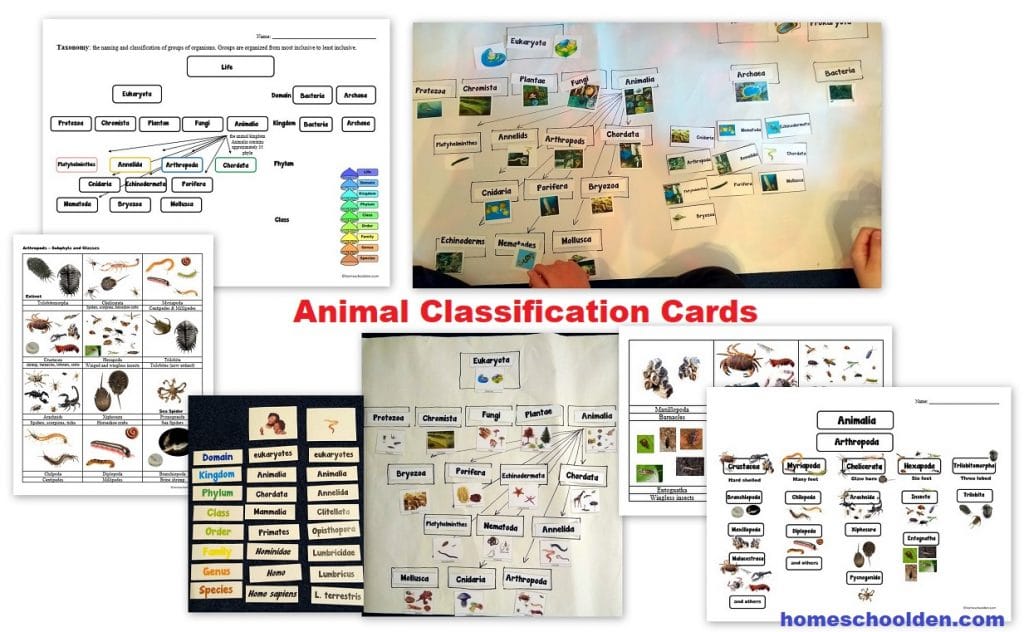

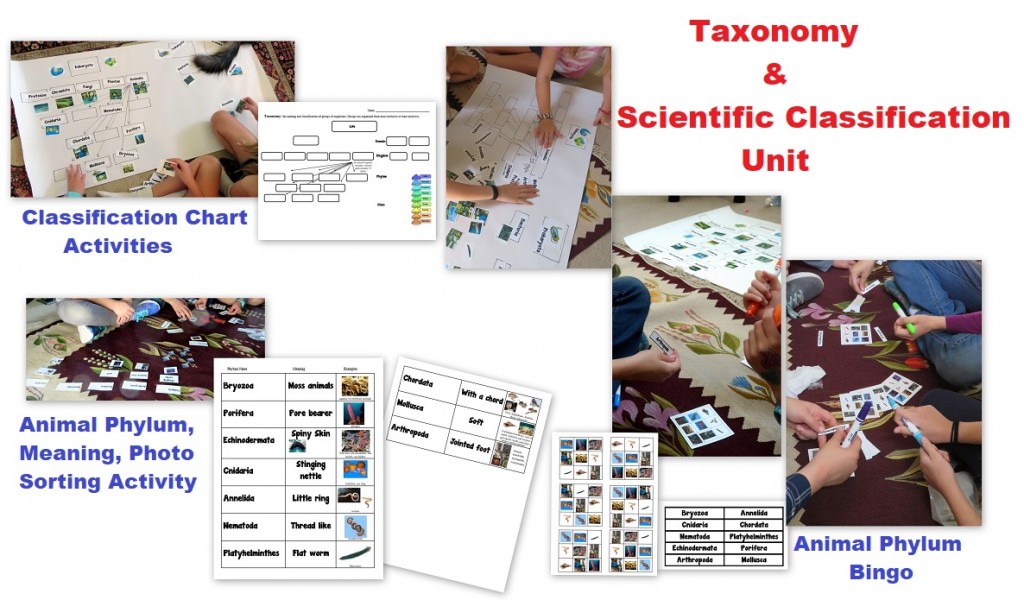
Biology: Ocean Unit
This unit is a study of the hydrosphere — Earth’s oceans, tides, marine life (including bioluminescent critters, and more!)
In our ocean studies we explored
- Marine Habitats
- Coral Reefs
- Tide Pools
- Water Form Words (bay, estuary, lagoon, fjord, etc.)
- Features of the Ocean Floor (trench, seamount, guyot, etc.)
- Ocean Navigation (early navigation with astrolabes & the constellations, modern SONAR)
- Salinity
- Tides (and the phases of the moon)
- Ocean Currents (Surface & Deep Sea Currents)
- Ocean Life:
- Special Body Features
- Fish Body Shape and Movement
- Biological Interactions: Mutualism and Commensalism in the Ocean
- Deep Sea Life – Bioluminescence, Anglerfish
We also talked about the ocean zones and different layers of the ocean again (which we covered three or four years ago).






 Pathogens Packet
Pathogens Packet
Seem more details at the Pathogens Unit Page.
Animal Unit
For younger student, you might want to check out the Animal Unit:
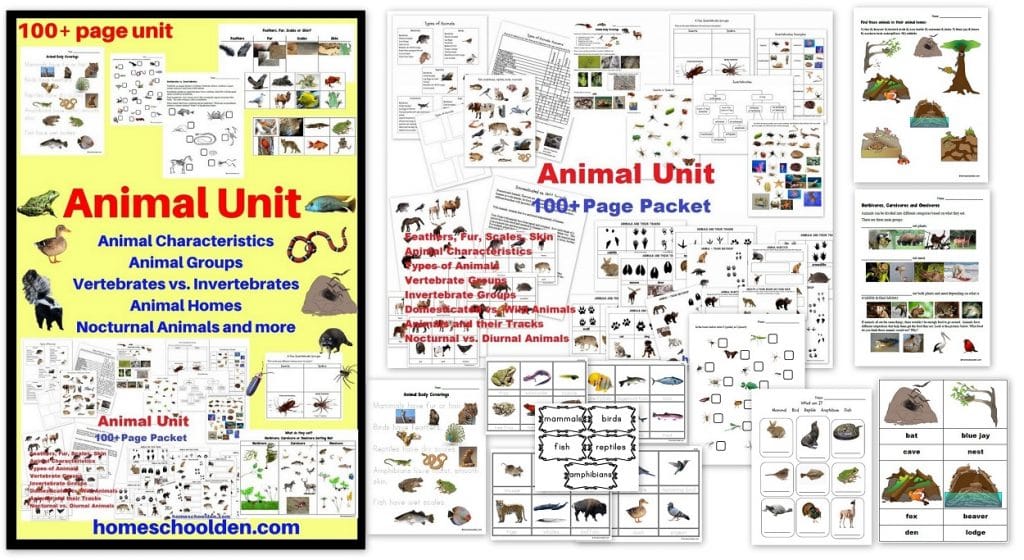
Or you may want check out the Big Animal BUNDLE:
The Big Animal BUNDLE includes 8 packets. 1) Animal Unit, 2) World Animals Packet, 3) Rainforest Packet, 4) Life Cycles Packet, 5) Winter Packet – plus several mini units 6) the Cicadas Packet and 7) the Chameleon Packet. 8) the Wolves Mini-Unit.
These Animal Units can each be purchased individually as well.
